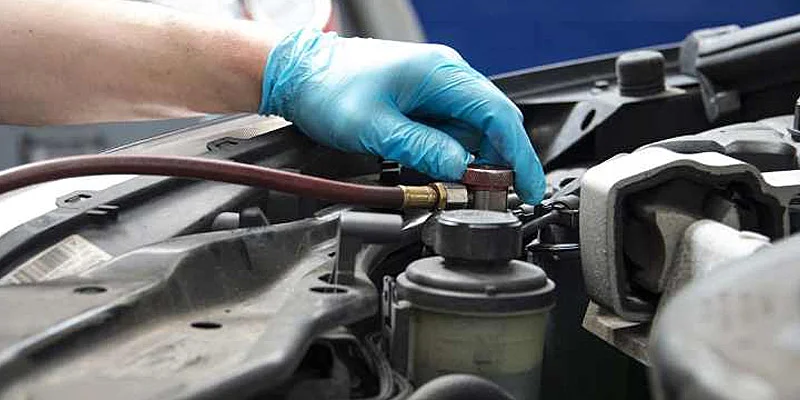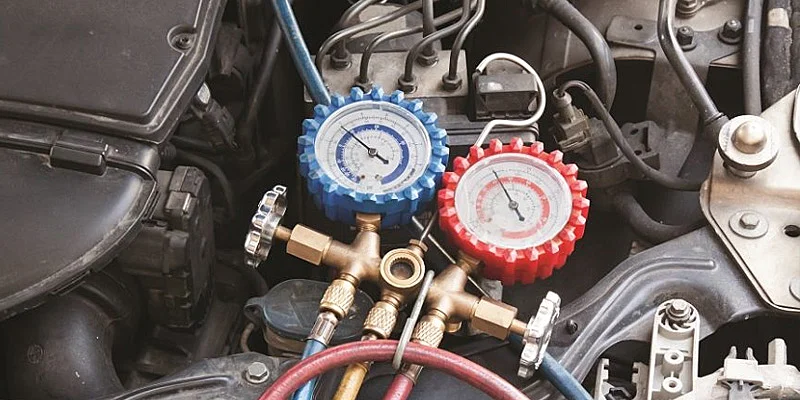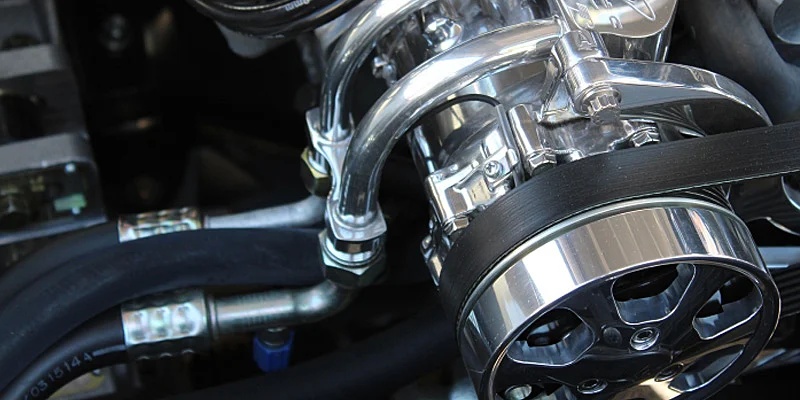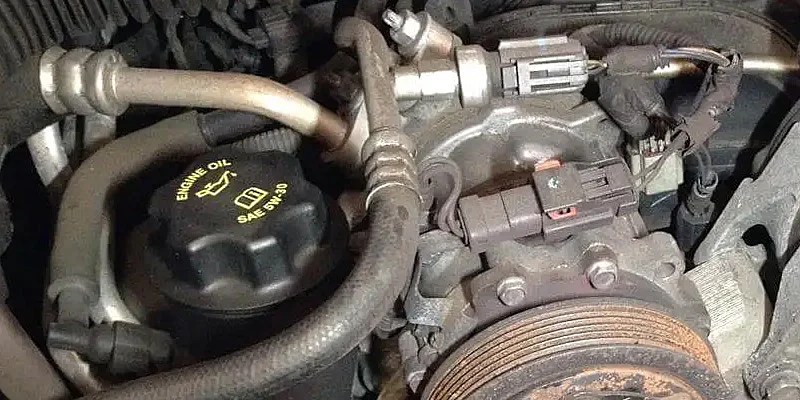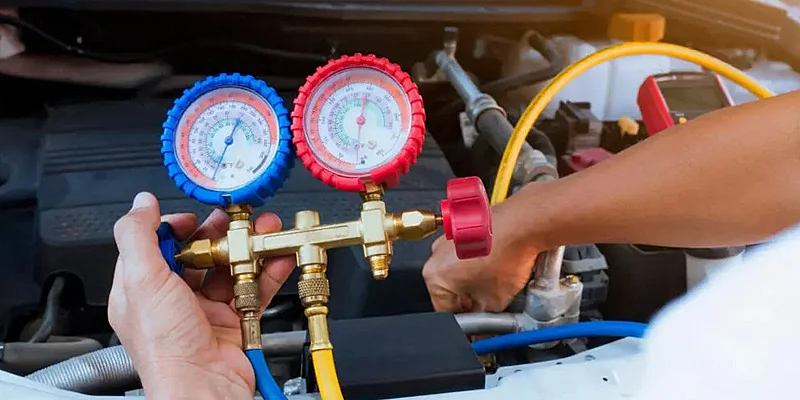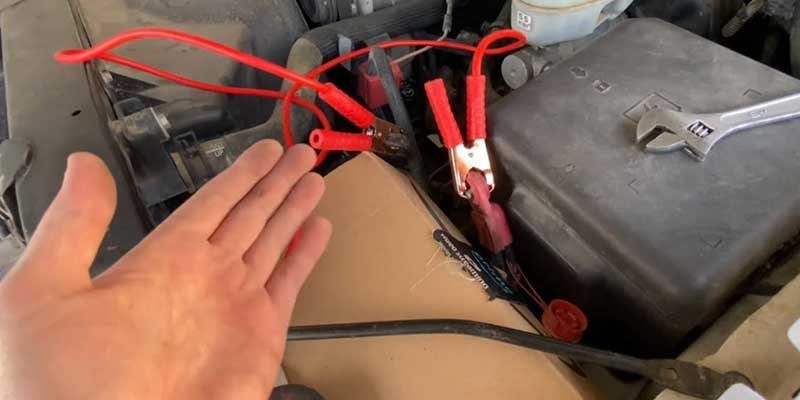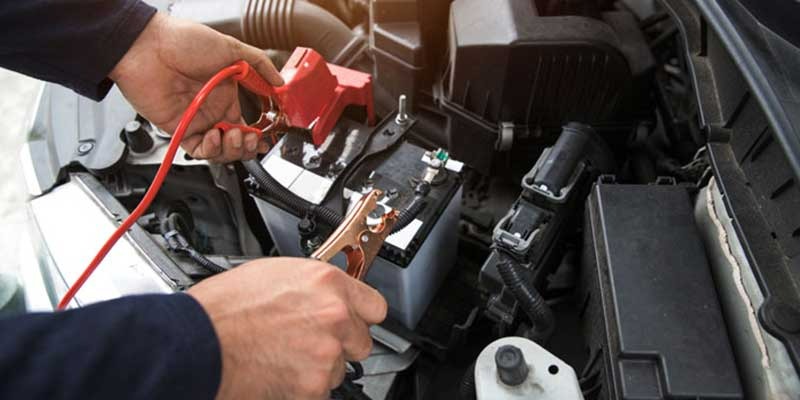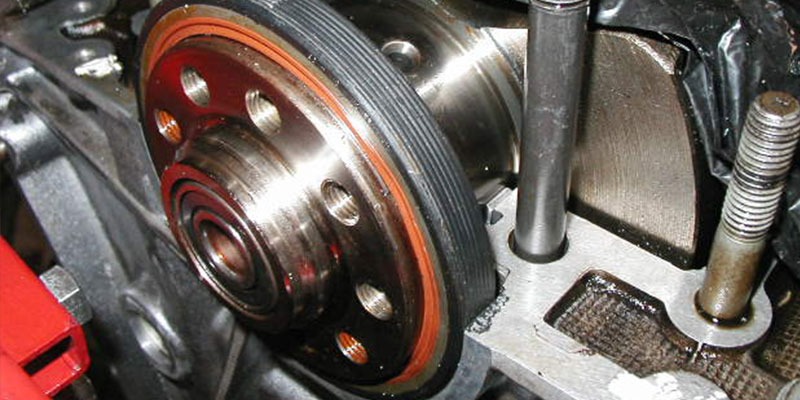The role of AC in any car is cooling. But, if you notice that every time you run your car AC, it starts throwing hot air, there is something wrong! Though, you checked the AC compressor and it seems working fine. So where is the real problem?
Why their AC vents are Releasing Hot Air?
The problem is – AC compressor running but won’t take Freon.
If you are encountering a similar issue, this blog post will unveil the causes and viable solutions to take you out of this situation. So, let’s start:
Here is what you need to do:
- Adjust the maximum cooling settings after turning on the engine.
- The engagement of the compressor’s clutch and disengagement of the pulley is essential and must be in sync. The liquid freon runs low when the pulley moves fast. It will not allow the air conditioner to operate.
- Check the voltage made by the compressor using a voltmeter.
- If the voltage gets through, the clutch is faulty. If not, consult the mechanic to have a better insight into the problem.
Four reasons why AC compressor is running but won’t take Freon
Here are the top 4 reasons why the AC compressor is running but won’t take Freon:
Faulty Compressor
Look for the signs indicating that the compressor is faulty such as:
Circuit breaker tripping
If the outside condensing unit is continuously tripping, there is some fault with the compressor. The reasons could be overheating, or the system is extracting too much power.
Frequent resetting of circuit breaker is hazardous. It may lead to a spark in circuit and even break into fire.
Odd sounds from your compressor
Odd noises such as whining and screeching sounds are another indication that the compressor is faulty. As the bearings wear off and the compressor turns bad, the compressor starts producing such noises.
Turn off the AC and then resume to check if such sounds persist. If yes, it indicates the time to replace the faulty compressor.
Solution: You need to replace your compressor. Calling a mechanic is the best way to resolve the issue.
System Leak
One of the common air conditioning problems is Leak. The internal bearing in the AC compressor prevents the liquid refrigerant from compressor leaking. A compressor is cools downs the internal system of AC by compressing the liquid freon.
Over time, when the bearings wear off due to the pressure inside the compressor, the freon starts leaking.
Solution: Leak Detection Kit
A leak detection kit is used to detect if any leak occurred in your compressor. UV lights and Dye in the kit are used to detect the leakage. . However, if the compressor is not cycling, this method will not help.
Secure the fittings within the system as tight. Avoid any kind of crimped hoses on these fittings. Also inspect the hose manifold valves.
Check O-ring sealings and front seal on the compressor and get them back on the compressor. Locate the pinholes in the condenser. Examine the condensation drains from the evaporator with UV light. Any leak is visible in the condensation drain with the presence of oil or dye.
Defect in Clutch
A Clutch is one of the significant components of the compressor that pressurizes and distributes the refrigerant in the air conditioner. It is pulled by the magnetic field when the clutch coil is energized with the power.
No refrigerant pumping will occur if the clutch fails to engage.
The green antifreeze is the most versatile of all because it can be used on any vehicle. This antifreeze reduces corrosion, rust, and cavitation for long periods. But the red antifreeze is better and equipped for modern-day cars.
Solution: Jumpstarting the clutch is a good idea. Significantly, a sufficient amount of oil must be in your AC to conduct repair/jump. Now Unplug the wire connector. Once disconnected, attach the wire jumper. Now, disconnect it from the compressor. Now connect the jumper to the battery terminal. It will start the compressor manually.
Refrigerant is low
An air conditioner is meant to circulate the cold air through its vents. However, the lack of adaptability leads to the streaming of the hot air. It indicated the low refrigerant level.
If your air conditioner is circulating hot air, it is a sign of compressor failure. If you notice that the air is getting warmer, check it immediately. Else the compressor will die over time.
Solution: Adding refrigerant is the only solution. You can do this on your own. If you are not sure about this, take the help of a professional. If done wrongly, it may cause problems to your AC system.
How to fill refrigerant in your Air compressor?
- Purchase one pair of goggles, one refrigerant dispenser, and two cans of r-134a refrigerant. Make sure to buy genuine refrigerant cans.
- Assemble the dispenser and check if the compressor is running
- Find the low-pressure refrigerant fill port and attach the dispenser
- Time to recharge the system
Here are some DIY when Car Air Conditioner Won’t Take Freon
Rotating Compressor
Start your engine, turn on the air conditioning and make sure that when you press down on the compressor clutch shoe, it rotates with a pulley. The magnetic clutches in these chillers allow them to work efficiently, so if one doesn’t have motion, there may be an issue somewhere else within this system.
The low-pressure switch turns off the electricity to the compressor clutch. In the event of low Freon pressure, use a low-pressure switch to disengage the compressor clutch.
In the event of a non-rotating clutch shoe, check if the pulley is rotating. If yes! Then you should unplug the electrical connection on the low-pressure switch. Now put the jump wire into harness jumping to connect both the terminals. It engages the compressor clutch. As the compressor starts rotating, it is time to recharge it.
With the help of a charging hose and can tapper kit, you will be able to charge your car battery without connecting its low side. The instructions for this type of setup are included with purchasing auto parts store from Walmart or Home Depot!
Connecting Refrigerant Manifold Gauges Set
By connecting a refrigerant manifold gauge set to the system, you will be able to check for low pressure. Turn on valves and consider gauge readings; if they are near each other or not fluctuating much, it indicates that the compressor is not working correctly. It could be due to some internal component breakage, maybe a reed valve.
You need to replace or repair the compressor to charge the system. In the event of very high-pressure indication in the high side gauge and the low side port, the gauge shows very low-pressure flow. There is a blockage in Freon’s free flow.
Clean or replace the components like orifice tubes or expansion valve to correct the issue.
Add Freon by a yellow hose using a refrigerant manifold gauge set. It would help if you had at least 150psi differential in high-pressure and low-side pressure readings. Turn on the tapper valve, purge the house and then turn on the low side valve. Ensure that you recharge up to enough Freon.
The air conditioner recharging will begin. Continue the charging till the gauges read to comply with the specification of the given automobile.
Removal of Manifold Gauge Set
Find the low pressure switch and remove the jump wire from it. Now connect the wiring harness to the pressure switch. Make sure you don’t burn your hand as the components will be extremely hot.
Conclusion
A working Air Conditioner helps us take uncomfortable journeys into a pleasant and relaxing one. If you ever encounter an issue with the hot air blowing through your AC vents, this guide will help you to get through. If none of the tips are working, it is in best interest to call an automotive mechanic right away!

My Name is Christopher Angels, and I am a postgraduate in mechanical engineering. Cars have always excited me as a child, and soon I decided to dive into the world of cars by pursuing mechanical engineering. I also worked as a Mechanic for over 3 years to understand Cars’ anatomy and how each part contributes to its working.
My Name is Christopher Angels, and I am a postgraduate in mechanical engineering. Cars have always excited me as a child, and soon I decided to dive into the world of cars by pursuing mechanical engineering. I also worked as a Mechanic for over 3 years to understand Cars' anatomy and how each part contributes to its working.

